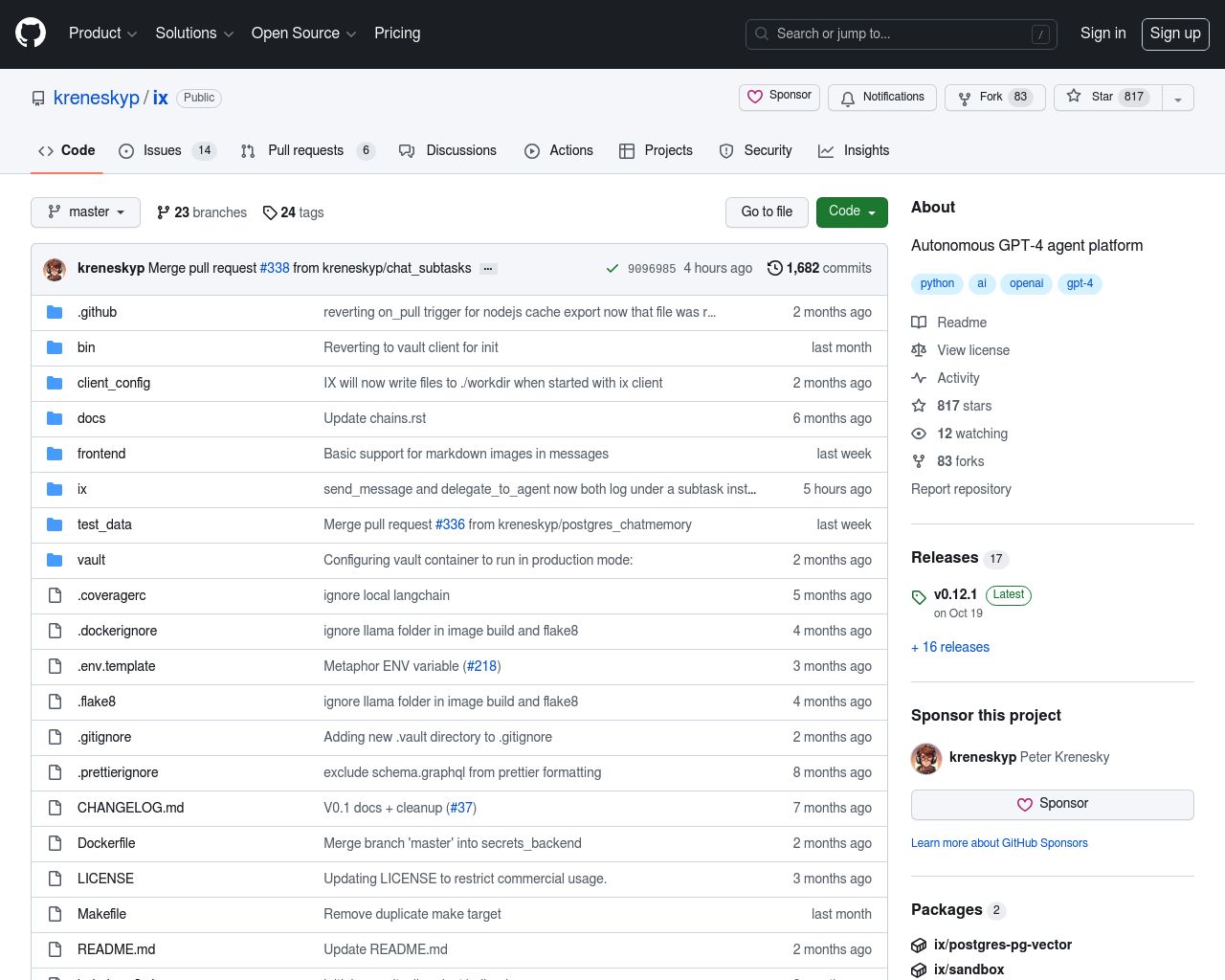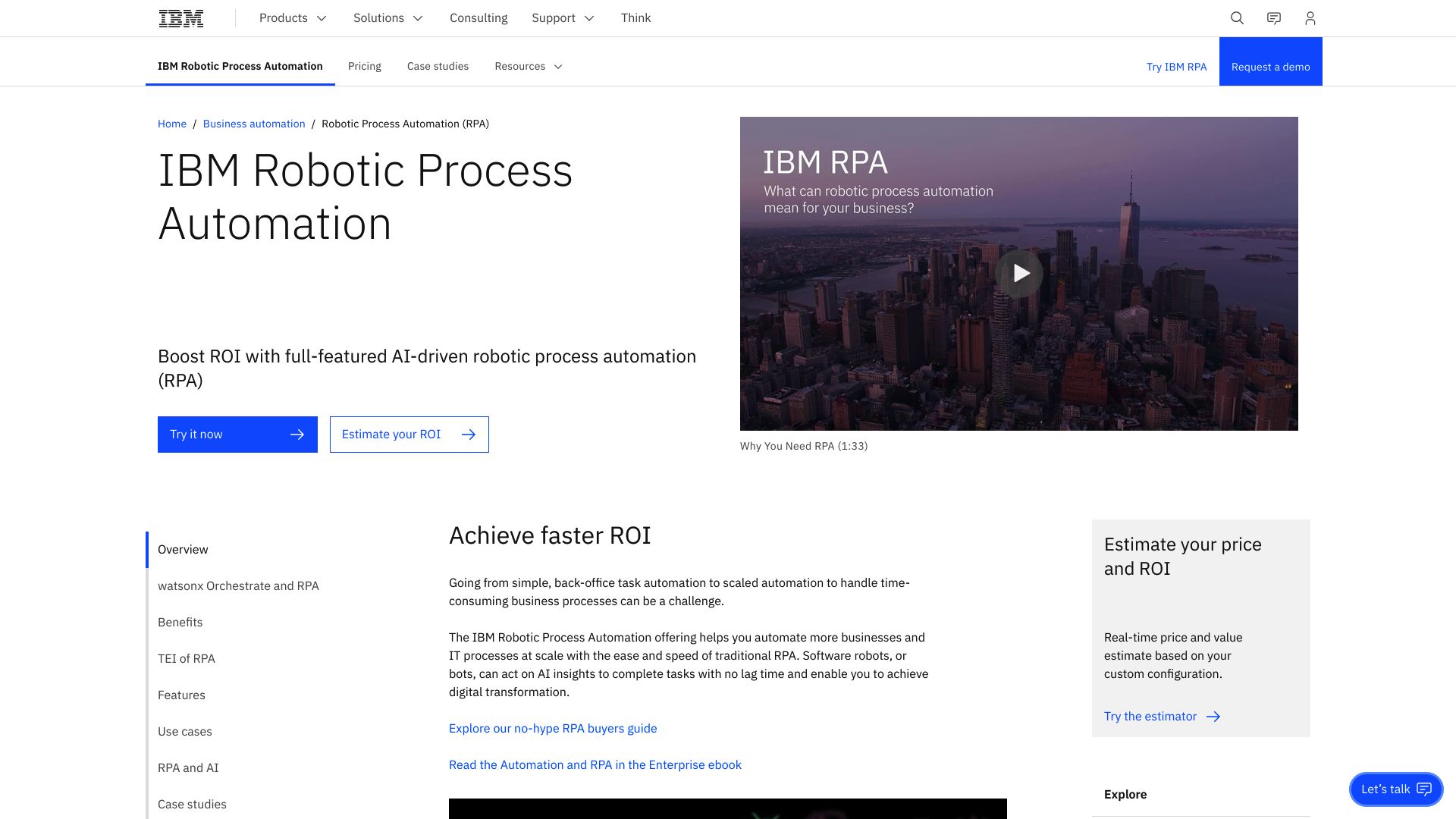Agent iX vs. IBM RPA: AI Automation Showdown
The AI industry continues to evolve rapidly, presenting businesses with powerful tools for automation and intelligent decision-making. This comparison explores Agent iX vs. IBM RPA, and SmythOS, three distinct platforms reshaping how organizations leverage AI. Agent iX offers an open-source solution for building autonomous AI agents, while IBM RPA focuses on automating repetitive tasks through software robots.
SmythOS emerges as a comprehensive platform combining advanced AI capabilities with user-friendly design. We’ll examine each platform’s core features, strengths, and limitations to help you determine which solution best fits your organization’s needs for AI-driven innovation and efficiency.
Agent iX Overview
Agent iX revolutionizes AI development with its open-source platform for creating, hosting, and managing autonomous AI agents. The platform excels in enabling multiple agents to collaborate seamlessly, sharing knowledge and tackling complex tasks in parallel. This scalable architecture adapts to diverse domains, from web research to code generation.


Agent iX stands out with its intuitive no-code editor, empowering users to design AI agent workflows visually. This feature democratizes AI development, allowing both technical experts and non-programmers to craft sophisticated agents through a drag-and-drop interface. The platform supports various AI models, including OpenAI, Google PaLM, and Anthropic, offering flexibility in agent capabilities.
Agent iX stands out with its intuitive no-code editor, empowering users to design AI agent workflows visually.
Agent iX prioritizes rapid testing and debugging within its development environment. The platform facilitates seamless integration with external APIs and supports deployment options like webhooks and scheduled tasks. While Agent iX offers robust features for AI agent development, it lacks some advanced capabilities like multimodal inputs, data lake support, and explicit constrained alignment tools.
The dockerized setup of Agent iX ensures efficient resource management and horizontal scalability, crucial for enterprises running multiple agents simultaneously. However, the platform’s open-source nature may require more technical expertise for deployment and maintenance compared to some fully-managed solutions. Agent iX’s focus on semi-autonomous agents and collaborative AI ecosystems positions it as a powerful tool for organizations seeking to leverage AI for complex problem-solving and task automation.
IBM RPA Overview
IBM Robotic Process Automation (RPA) equips businesses with tools to automate repetitive digital tasks across enterprise applications. The platform enables creating software robots, or bots, that interact with user interfaces just as humans would.
IBM Robotic Process Automation (RPA) equips businesses with tools to automate repetitive digital tasks across enterprise applications. The platform enables creating software robots… that interact with user interfaces just as humans would.
IBM RPA provides a cloud-based environment for bot development and production. Its visual, low-code interface allows users to craft automation workflows through drag-and-drop actions, making bot creation accessible to both technical and non-technical users.


The platform offers flexible bot invocation methods, including scheduling, orchestrations, APIs, on-demand attended automation, and chatbot integration. This versatility allows businesses to deploy bots in ways that best suit their operational needs. IBM RPA scales through distributed runtime environments and orchestration processes, accommodating growing automation demands.
The platform offers flexible bot invocation methods, including scheduling, orchestrations, APIs, on-demand attended automation, and chatbot integration.
Integration capabilities stand out as a key strength. IBM RPA connects seamlessly with common enterprise applications like Microsoft Office, SAP, Java-based systems, and web apps. This broad compatibility enables bots to automate tasks across diverse software ecosystems, maximizing the reach and impact of automation initiatives.
For enterprises concerned with oversight and compliance, IBM RPA includes robust monitoring, analytics, and auditing features. These tools provide visibility into bot performance and operations, facilitating continuous improvement and ensuring adherence to regulatory requirements.
While IBM RPA offers powerful automation capabilities, its enterprise focus may present a steeper learning curve for smaller organizations or individual users. The platform’s comprehensive features and integration options, while valuable for large-scale deployments, could potentially overwhelm users seeking simpler automation solutions.
IBM RPA positions itself as an enterprise-grade automation platform, aiming to eliminate repetitive manual processes across organizations. Its vision centers on creating a scalable digital workforce, with a clear focus on enterprise integration, security considerations, and tools tailored for business users. This approach makes IBM RPA a compelling choice for large enterprises looking to implement wide-ranging automation strategies, though smaller businesses might find more accessible alternatives for their automation needs.
Feature Comparison
Agent iX and IBM RPA offer distinct approaches to automation and AI agent development. Agent iX focuses on creating autonomous AI agents using large language models, while IBM RPA specializes in automating repetitive tasks through software robots. This fundamental difference leads to significant feature gaps between the two platforms.
In core components, Agent iX provides a visual no-code editor for designing AI agent workflows, supporting multiple AI models like OpenAI and Google PaLM. IBM RPA, however, offers a low-code interface tailored for creating automation bots that mimic human interactions with user interfaces. Agent iX enables multi-agent collaboration and knowledge sharing, a capability not prominently featured in IBM RPA’s bot-centric approach.
Security features highlight another gap. While IBM RPA emphasizes enterprise-grade security with robust encryption and access controls, Agent iX’s documentation lacks explicit mentions of advanced security measures like data encryption or IP control. IBM RPA’s focus on compliance and auditing aligns with enterprise needs, offering detailed logs and analytics that Agent iX does not explicitly provide.
| Agent iX | IBM RPA | SmythOS | |
|---|---|---|---|
| CORE FEATURES | |||
| AI Agents | ✅ | ❌ | ✅ |
| Hosted Agents (Dev, Production) | ❌ | ✅ | ✅ |
| Environments (Dev, Production) | ❌ | ✅ | ✅ |
| Memory & Context | ❌ | ❌ | ✅ |
| Autonomous Agents | ❌ | ❌ | ✅ |
| Explainability & Transparency | ❌ | ❌ | ✅ |
| Debug Tools | ❌ | ✅ | ✅ |
| Multimodal | ❌ | ❌ | ✅ |
| Problem-Solving Capabilities | ✅ | ❌ | ✅ |
| Multi-Agent Collaboration | ✅ | ❌ | ✅ |
| Audit Logs for Analytics | ❌ | ✅ | ✅ |
| Work as Team | ❌ | ❌ | ✅ |
| SECURITY | |||
| Constrained Alignment | ✅ | ❌ | ✅ |
| Data Encryption | ❌ | ✅ | ✅ |
| OAuth | ❌ | ❌ | ✅ |
| IP Control | ❌ | ❌ | ✅ |
| COMPONENTS | |||
| Foundation AIs | ✅ | ❌ | ✅ |
| Huggingface AIs | ❌ | ❌ | ✅ |
| Zapier APIs | ❌ | ❌ | ✅ |
| Classifiers | ❌ | ❌ | ✅ |
| Data Lakes | ❌ | ❌ | ✅ |
| DEPLOYMENT OPTIONS (EMBODIMENTS) | |||
| Deploy as API | ❌ | ✅ | ✅ |
| Deploy as Webhook | ❌ | ❌ | ✅ |
| Staging Domains | ❌ | ❌ | ✅ |
| Production Domains | ❌ | ❌ | ✅ |
| API Authentication (OAuth + Key) | ❌ | ❌ | ✅ |
| Deploy as Site Chat | ❌ | ❌ | ✅ |
| Deploy as Scheduled Agent | ❌ | ✅ | ✅ |
| Deploy as GPT | ❌ | ❌ | ✅ |
| DATA LAKE SUPPORT | |||
| Hosted Vector Database | ❌ | ❌ | ✅ |
| Sitemap Crawler | ❌ | ❌ | ✅ |
| YouTube Transcript Crawler | ❌ | ❌ | ✅ |
| URL Crawler | ❌ | ❌ | ✅ |
| PDF Support | ❌ | ✅ | ✅ |
| Word File Support | ❌ | ✅ | ✅ |
| TXT File Support | ❌ | ✅ | ✅ |
Best Alternative to Agent iX and IBM RPA
SmythOS delivers a superior AI automation platform compared to Agent iX and IBM RPA. Our drag-and-drop interface empowers users to build sophisticated AI agents without coding, democratizing AI development across skill levels. Unlike Agent iX’s limited collaboration features or IBM RPA’s focus on repetitive tasks, SmythOS enables true multi-agent systems that work together on complex problems.
SmythOS delivers a superior AI automation platform compared to Agent iX and IBM RPA. Our drag-and-drop interface empowers users to build sophisticated AI agents without coding.
We offer unparalleled flexibility in deployment options. Agents can be deployed as APIs, webhooks, scheduled tasks, chatbots, and more — capabilities lacking in both Agent iX and IBM RPA. This versatility allows SmythOS to adapt to any workflow or use case.
While IBM RPA emphasizes security for enterprises, SmythOS matches those capabilities while providing greater transparency. Our platform includes robust debugging tools, audit logs, and explainable AI features that build trust. We also support a wider range of AI models and integrations compared to Agent iX’s limited options.
Perhaps most importantly, SmythOS delivers a complete ecosystem for AI development and deployment. From our hosted vector database to support for diverse data sources like PDFs and web crawling, we provide all the components needed to create truly intelligent and capable AI systems. This end-to-end approach sets SmythOS apart as the clear choice for organizations seeking to harness the full potential of AI automation.
Conclusion
Agent iX, IBM RPA, and SmythOS each offer unique approaches to AI-driven automation and agent development. Agent iX excels in creating collaborative AI ecosystems with its visual no-code editor and support for multiple AI models. IBM RPA provides robust enterprise-grade automation for repetitive tasks, emphasizing security and integration with existing business systems.
SmythOS, however, combines the strengths of both platforms while addressing their limitations. Our platform offers unparalleled flexibility with a drag-and-drop interface for building complex AI workflows, extensive API integrations, and support for various AI models. Unlike Agent iX, SmythOS provides advanced features like multimodal inputs, data lake support, and explicit constrained alignment tools.
Compared to IBM RPA, we offer a more accessible interface for both technical and non-technical users, along with broader AI capabilities beyond task automation.
SmythOS stands out with its ’Create Once, Deploy Anywhere’ philosophy, allowing seamless deployment across multiple platforms and services. This versatility, combined with our robust security measures and scalable architecture, makes SmythOS the ideal choice for businesses seeking to harness the full potential of AI.
Whether you’re a developer looking for advanced customization options or a business leader aiming to transform your operations, SmythOS provides the tools and flexibility to meet your needs.
To experience the power of SmythOS firsthand, we invite you to create a free account and start building your AI agents today. With our risk-free trial and extensive library of templates, you can quickly explore how SmythOS can revolutionize your workflow and drive innovation in your organization. Discover the future of AI automation with SmythOS and take the first step towards unlocking unprecedented efficiency and creativity in your business processes.
Last updated:
Disclaimer: The information presented in this article is for general informational purposes only and is provided as is. While we strive to keep the content up-to-date and accurate, we make no representations or warranties of any kind, express or implied, about the completeness, accuracy, reliability, suitability, or availability of the information contained in this article.
Any reliance you place on such information is strictly at your own risk. We reserve the right to make additions, deletions, or modifications to the contents of this article at any time without prior notice.
In no event will we be liable for any loss or damage including without limitation, indirect or consequential loss or damage, or any loss or damage whatsoever arising from loss of data, profits, or any other loss not specified herein arising out of, or in connection with, the use of this article.
Despite our best efforts, this article may contain oversights, errors, or omissions. If you notice any inaccuracies or have concerns about the content, please report them through our content feedback form. Your input helps us maintain the quality and reliability of our information.
